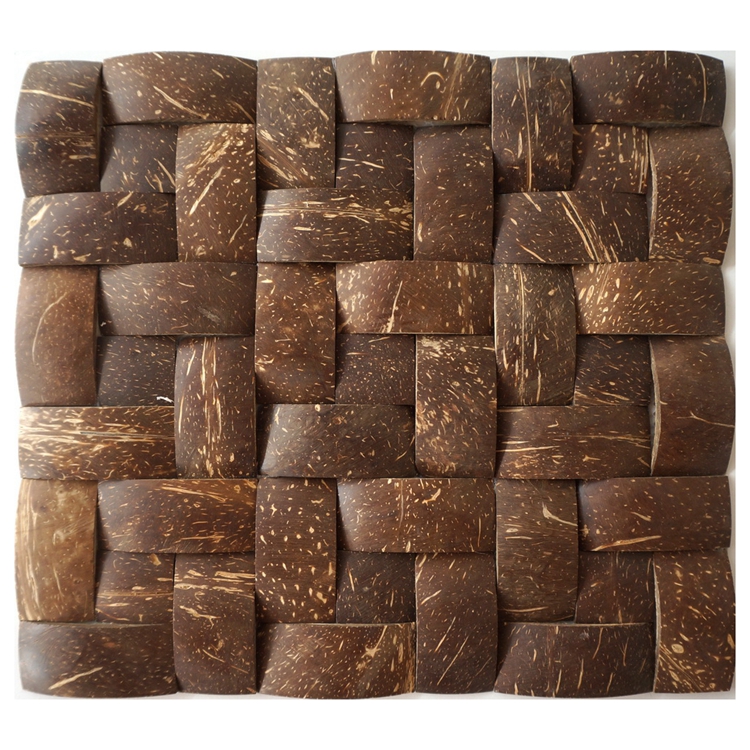Knowledge about coconut shell mosaic
Coconut shell mosaic is a unique and eco-friendly material that has gained popularity in various design and crafting applications. Here's an overview of the characteristics and uses of coconut shell mosaic:
1. Raw Material: Coconut shell mosaic is crafted from the outer husk of coconuts. The shells, which are usually considered waste after extracting the coconut meat and water, are repurposed to create this sustainable material. This eco-friendly approach adds value to the coconut by utilizing a byproduct that would otherwise be discarded.
2. Sustainability: One of the key attributes of coconut shell mosaic is its sustainability. By using coconut shells as the primary material, this type of mosaic contributes to the reduction of waste and promotes eco-friendly practices. It aligns with the principles of sustainable design and appeals to environmentally conscious consumers.
3. Artistic Appearance: Coconut shell mosaic exhibits a distinctive and natural aesthetic. The mosaic pieces, crafted from coconut shells, often feature earthy tones ranging from warm browns to deep mahogany. The natural patterns and textures of the coconut shells create a visually appealing mosaic that can add a touch of rustic elegance to various surfaces.
4. Craftsmanship: Creating coconut shell mosaic involves a meticulous crafting process. The coconut shells are cleaned, dried, and cut into small, uniform pieces. These pieces are then arranged and adhered to a substrate to form the mosaic pattern. The craftsmanship involved in working with coconut shell mosaic panel requires skill and attention to detail to achieve a cohesive and visually pleasing result.

5. Versatility: Coconut shell mosaic finds applications in various design and decor elements. Common uses include wall coverings, backsplashes, flooring, and decorative accents. Its versatility allows it to be incorporated into both interior and exterior design schemes, adding a touch of nature-inspired beauty to different spaces.
6. Durability: Coconut shell mosaic is known for its durability. The hardness of the coconut shell makes the resulting mosaic resistant to wear and tear. This makes it suitable for use in areas with moderate foot traffic or as decorative elements that can withstand the test of time.
7. Cultural Significance: In addition to its aesthetic and functional qualities, coconut shell mosaic may also hold cultural significance in regions where coconuts are abundant. The use of natural materials, such as coconut shells, in traditional crafts and design reflects a connection to the local environment and heritage.
8. Maintenance: Maintaining coconut shell mosaic is relatively straightforward. Regular cleaning with a soft, damp cloth is usually sufficient to preserve its appearance. Additionally, sealing the mosaic with an appropriate finish can enhance its longevity and protect it from environmental factors.
Conclusion: Coconut shell mosaic represents a harmonious blend of sustainability, craftsmanship, and artistic appeal. As a material derived from a renewable resource, it embodies eco-conscious design principles. Whether used as a focal point in interior decor or as an accent in architectural elements, coconut shell mosaic adds a unique and natural touch to spaces, making it a preferred choice for those seeking both aesthetic beauty and environmental responsibility in their design choices.



